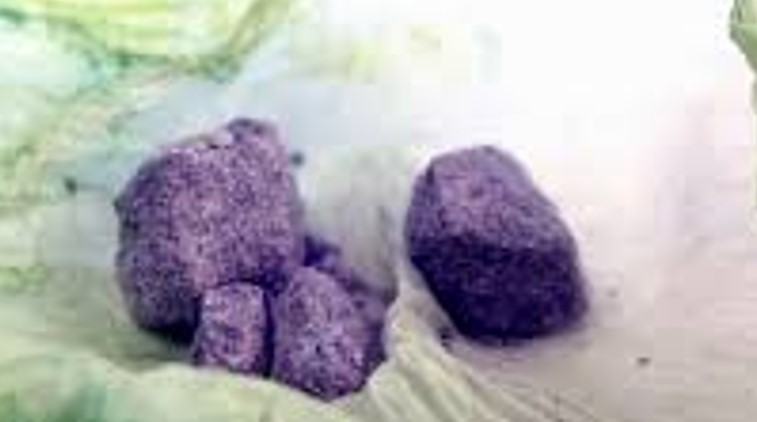HEROIN

Moderate doses of heroin cause euphoria, a warm “rush” sensation, constricted pupils, and nausea. Higher doses result in restlessness, constipation, droopy eyelids (on the nod), shallow and slow breathing, depressed cough reflux, sweatiness, lethargy, slow heart rate, and sedation. Overdose results in respiratory failure and death. The drug is highly addictive and withdrawal symptoms (cold turkey) may begin within 6 to 24 hours of discontinuing the drug. However, the time frame can fluctuate with the degree of tolerance as well as the amount of the last dose.
Heroin may be a white or brown powder or a black sticky substance known as “Black Tar Heroin.” It can be smoked, vaporized, snorted, sniffed (dissolved in nasal spray), or injected. When it enters the body it is converted back to morphine and binds to opioid brain receptors, especially those in the pain-perception and reward areas of the brain and in the brain-stem which controls wakefulness, blood pressure and breathing.


Warning signs of heroin use include a lack of personal hygiene, a tendency toward recklessness, withdrawal from family and friends, items of value being “lost or stolen”, mood swings, intense rage, lying, and manipulation, sudden drop in school grades and excessive ditching at school, and strong craving for sweets-morning, noon, and night.
The physical signs of heroin use include runny nose and constant sniffling, needle marks on arms and/or legs, between toes, in groin area, sores on nostrils and top of lips from smoking heroin, constant “hacking” cough from smoking heroin off of tin foil, loss of appetite and dramatic weight loss, nodding off during day and inability to sleep at night, constant sleepy or groggy expression and scratch marks all over body, especially neck and arms.
Brorphine (Purple Heroin):

Brorphine is s a new synthetic opioid identified as “purple heroin” and is sold both as a single substance of abuse or in combination with heroin and fentanyl. Multiple overdose deaths have been reported in the US especially when this drug is mixed with heroin, methamphetamine, fentanyl, carfentanil, and a sedative known as etizolam. Symptoms of a “purple heroin” overdose are similar to any other opioid overdose.

Heroin and Xylazine
Xylazine is a non-opioid sedative, muscle relaxant and analgesic for veterinary use but is also used to adulterate and potentiate the effects of heroin/fentanyl. Its use first emerged in Puerto Rico and has spread to mainland US where it is combined with heroin and Fentanyl. The combination may be swallowed, inhaled, snorted or injected and results in profound CNS depression and decreased blood pressure, respiratory rate and heart rate. It should be suspected when opioid overdose is accompanied by profound hypotension and very slow heart rate not responsive to naloxone. There is no antidote and intense supportive care is required. The death rate from overdose of this combination is said to be about 30%. Xylazine is also causing necrosis of the skin, and has become a big concern for the medical community.
